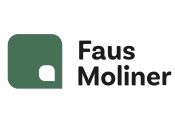A final “No” to tenders for “Therapeutically equivalent alternatives”
The Supreme Court, in a judgement of 29 January, rules in favour of an appeal prepared by Faus & Moliner representing one of our clients
CAPSULAS Nº 188
Background
In July 2013, the Healthcare Service of Andalucia (SAS) opened a tender for a framework agreement with the intent of selecting certain active ingredients to treat specific diseases. The purpose of the contracting authority was to select, for certain therapeutic indications, one single company who would supply a given drug among those which could be offered to treat such indication. In Lot 18, for instance, the SAS contemplated that Anti-TNF’s and up to 5 biological products could be offered to treat rheumatoid arthritis; in lot 19 various products could be offered to treat ankylosing spondylitis, and in lot 20 two different products could be offered as second line treatment for multiple sclerosis.
The objective of the contracting authority was that, for each lot, one medicinal product (and only one) would be listed in the formularies of hospitals in Andalucia, and that such would be the medicinal product used for new patients. Knowing that the design of the tender could raise some issues, the SAS added that a product not listed in the formularies could be prescribed if relevant clinical issues so required.
Other contracting authorities took the same path, and the debate on how medicines could be selected by hospitals and on the substitution of certain medicinal products, became a hot topic. To a large extent, the debate is still open today.
How lots should be established
In 2013, when preparing some appeals against the SAS invitation to tender, we relied on a ruling of 27 March 2013 by the Central Administrative Court for Public Tenders. In this case, the Court decided that it was more adequate to define the lots by reference to a product rather than by reference to a therapeutic indication. The Court added that this was so because the therapeutic profile of each product may be subject to interpretation, and because two products, even if approved for the same therapeutic indication, may not be interchangeable.
The administrative appeals that we filed in Andalucia did not succeed, and the case made all the way to the Supreme Court.
In this ruling the Supreme Court concludes that two different active ingredients may not be included in the same lot; since it would be contrary to the legal requirement that lots must be designed in such a manner that they form a functional unit. This idea was also expressed by the Supreme Court in a ruling of 2016. The rationale used by the Central Administrative Court for Public Tenders in 2013 has thus been validated. The matter should now be closed, and the jurisprudence of the Supreme Court should be enough to put an end to the idea that tenders may be organised under the idea that contracting authorities may decide to buy only one of those products which they may consider as being therapeutically equivalent alternatives.
